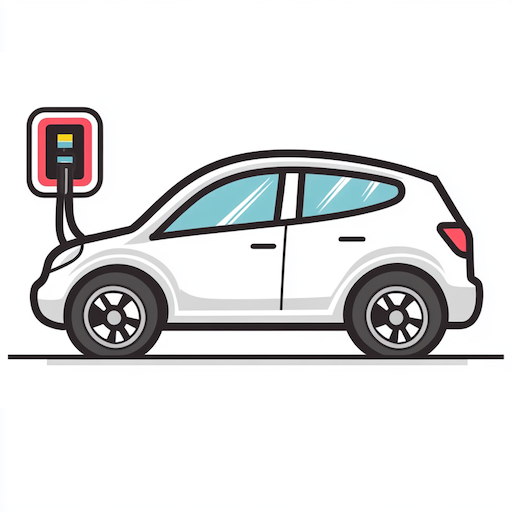- The 2026 JAC Hunter PHEV was unveiled at the Melbourne Motor Show, signifying a pivotal advancement in hybrid pickup trucks.
- With 385kW of power and 1000Nm of torque, it stands out in its segment, surpassing competitors like the BYD Shark 6 and RAM 1500 TRX.
- A turbocharged 2.0L inline four-cylinder engine paired with a lithium-ion phosphate battery provides significant performance advantages.
- It offers a battery-only range of 100 kilometers, appealing to both rugged off-roaders and environmentally aware commuters.
- The Hunter PHEV includes Vehicle-to-Load (V2L) capability for powering external equipment, enhancing its utility.
- Design features such as unique alloy wheels and red brake calipers, along with tech upgrades like a 10.4-inch infotainment screen, set it apart.
- The launch anticipates creativity in hybrid engineering, combining power and sustainability, with more details expected before its 2026 release.
The Melbourne Motor Show witnessed the unveiling of a game-changer in the world of utility vehicles: the 2026 JAC Hunter PHEV. Marking a bold entry into the global hybrid pickup scene, this ute doesn’t just join the race—it aims to leave competitors in the dust. With a powertrain that commands attention, the Hunter PHEV is a muscular marvel, producing an astounding 385kW and 1000Nm of torque, positioning it as a trailblazer in its class.
Beneath its robust exterior, a turbocharged 2.0L inline four-cylinder engine serves as the heartbeat of this beast, operating as an onboard generator that energizes a lithium-ion phosphate battery. Together, they propel the Hunter PHEV beyond what the current contenders can offer, eclipsing the performance metrics of even the highly-anticipated BYD Shark 6 and asserting dominance over established juggernauts like the RAM 1500 TRX.
While the focus is on raw power and capability, the Hunter PHEV does not compromise on ecological sensibility. It promises a battery-only range of 100 kilometers, paving the way for both robust off-roading adventures and environmentally conscious daily commutes. Add to this the state-of-the-art Vehicle-to-Load (V2L) capability that allows the truck to supply power to external devices, and you have a utility vehicle that’s as much at home at a campsite as it is in the city.
Aesthetically, the Hunter PHEV doesn’t stray far from its diesel sibling, the JAC T9. The similarities end where detail begins—a unique sail panel, intricate alloy wheels, and the bold statement of red brake calipers help it stand out. Inside, the cabin features a notable 10.4-inch infotainment touchscreen and an upgraded 10.25-inch instrument panel display, all harmonized with advanced safety features like autonomous emergency braking and adaptive cruise control.
JAC hasn’t just crafted a pickup but has engineered a statement on wheels. With full specifications yet to be finalized, potential buyers can anticipate further revelations as the production date nears, set for late 2025. The Hunter PHEV, poised to hit the Australian market in 2026, will undoubtedly ignite the curiosity of enthusiasts who crave both power and efficiency.
The debut of the JAC Hunter PHEV underscores an exciting evolution in the automotive landscape. It’s not merely about overpowering competitors but about redefining what’s possible for hybrids—delivering innovation without sacrificing performance. The future of utility vehicles gleams a little brighter, promising that tomorrow’s journeys will be as thrilling as they are sustainable.
Revolutionary Ride: The 2026 JAC Hunter PHEV Takes Hybrid Pickups by Storm
Introduction
The 2026 JAC Hunter PHEV, unveiled at the Melbourne Motor Show, is set to redefine the hybrid pickup market. This robust vehicle combines power, sustainability, and advanced features, ensuring it stands out in an ever-evolving automotive landscape. Moving beyond the source material, let’s delve deeper into what makes the Hunter PHEV a game-changer.
Key Features and Specifications
Unmatched Powertrain
– Impressive Performance: The Hunter PHEV boasts a formidable power output of 385kW and 1000Nm of torque. This makes it one of the most powerful hybrid pickups currently in the works, promising exceptional performance on and off the road.
– Engine and Battery: The turbocharged 2.0L inline four-cylinder engine functions as an onboard generator, energizing a high-capacity lithium-ion phosphate battery. This setup not only maximizes performance but also ensures fuel efficiency.
Sustainability and Range
– Eco-Friendly Credentials: With a battery-only range of 100 kilometers, the Hunter PHEV aligns with environmental consciousness, facilitating emission-free urban commutes and outdoor excursions.
– V2L Capability: The Vehicle-to-Load (V2L) feature is a standout, enabling the pickup to power external devices—a boon for camping trips and emergencies.
In-Depth Comparison
Market Context
– Competitors: The Hunter PHEV eclipses models like the BYD Shark 6 in terms of power and range. It also challenges giants like the RAM 1500 TRX by integrating sustainable technologies.
– Industry Trends: The surge in hybrid technologies reflects a broader industry shift towards sustainability without compromising on power. As regulations tighten and consumers demand greener options, vehicles like the Hunter PHEV are well-placed to lead.
Real-World Use Cases
– Outdoor Adventures: Beyond urban commutes, the Hunter PHEV’s capabilities make it ideal for rugged terrains. Its power and range suit off-road enthusiasts who don’t want to sacrifice environmental considerations.
– Work Utility: The V2L feature supports fieldwork in remote locations, offering a reliable power source for tools and devices.
Features & Innovations
– Interior and Technology: The pickup features a 10.4-inch infotainment touchscreen and a 10.25-inch instrument panel, enhancing the driver experience with connectivity and advanced safety features like adaptive cruise control and autonomous emergency braking.
– Design Elements: Aesthetically, it maintains rugged yet refined styling with unique elements such as a sail panel and red brake calipers, reflecting JAC’s attention to detail.
Pros and Cons Overview
Pros
– Powerful Hybrid Performance: Combines electric efficiency with traditional engine power.
– Environmental Benefits: Zero emissions over pure electric drives.
– Advanced Tech Features: Infotainment and safety technologies are top-notch.
Cons
– Price Point: As a premium hybrid, the price could be higher than traditional pickups.
– Limited Battery-Only Range: While 100 km is significant, it may not suffice for longer trips without the engine’s help.
Security & Safety
– Safety Features: The Hunter PHEV includes cutting-edge safety features such as autonomous emergency braking, offering peace of mind on the road.
– Robust Build: It combines safety with durability, essential for both everyday and challenging drives.
Conclusion and Recommendations
The 2026 JAC Hunter PHEV is not just a pickup—it’s a statement of where the automotive industry is headed. Its blend of power, efficiency, and innovative features makes it a formidable contender in the hybrid market. For potential buyers, now is the time to embrace hybrid mobility that offers the best of both worlds.
Quick Tips
– Stay Informed: Keep updated on further announcements regarding specs and pricing as we approach its 2026 release.
– Consider Needs: Assess whether the blend of power and eco-friendliness suits your lifestyle, especially for frequent off-roaders.
For more information on JAC’s innovative vehicles, visit the official website of JAC Motors.













